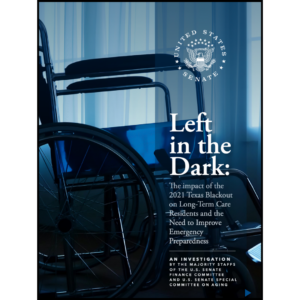Environmental Services’ role in infection control
The annual ritual of “spring cleaning” is intended to freshen and restore a healthy environment that might have been compromised while the building was shut tight against the winter elements. The nation’s long, hot summer kept buildings sealed tight while air conditioners worked overtime. Now with approach of fall—and the flu season—it’s time to refresh the environment.
Germs, dust and dirt are everywhere regardless of how vigilant we are in keeping cars, homes and facilities clean. And this is especially important when caring for the aged, sick and infirm populations living in long-term care communities.
 Although unpredictable, flu season can begin as early as October and run as late as May, with peak activity in the months of January and February. While nursing staff is conscientious about frequent hand washing, surface disinfection and the like, a facility’s housekeeping and maintenance staff are the first line of defense in preventing viral outbreaks.
Although unpredictable, flu season can begin as early as October and run as late as May, with peak activity in the months of January and February. While nursing staff is conscientious about frequent hand washing, surface disinfection and the like, a facility’s housekeeping and maintenance staff are the first line of defense in preventing viral outbreaks.
FIRST, KNOW YOUR RESIDENTS
Gary Dolan, CHESP, director of environmental services at The Village at Penn State, State College, Pa., and past-president of ASHES (now the Association for the Healthcare Environment [AHE]), advises a top-down, interdepartmental approach to infection control. “Start by knowing your residents,” he says. “Meet with your director of nursing or nurse manager to know who is living in your building. Are there any health conditions such as allergies or chronic conditions that might preclude the use of some cleaning products in their rooms? Have there been changes in a resident’s health status that could interact with cleaning products? Are there any issues with new admissions that could involve Environmental Services?” And don’t stop there. Dolan urges sharing the information with housekeeping managers so they will know exactly who is at risk and have an alternative product or practice available. “The last thing you want to do is exacerbate a resident’s sensitivities to the products you use,” he stresses.
GOOD CLEANING PRACTICES
Dolan acknowledges that most residents will be living at the facility for a long time. “Resident rooms need a thorough cleaning semi-annually, prior to admissions and after a unit is vacated” he says. “At The Village, we literally strip beds down to the mattress, pull furniture out of the room and give the room a deep cleaning, using antibacterial cleaners throughout twice a year. Each room takes a few hours to do, so scheduling is important,” he adds.
The Village at Penn State is carpeted throughout, including resident rooms, to create a homelike atmosphere. “Because carpeting holds debris, we do a deep-cleaning extraction twice a year,” says Dolan. This procedure has proven effective because infection rates are very low for a small skilled facility, according to Dolan. He adds that his staff uses HEPA-filtered vacuums for regular maintenance.
Even tiled floors can present a breeding ground for germs, which might become embedded in the grout. Floors should be scrubbed often and any spills or body fluids should be cleaned up immediately with an antibacterial agent.
Dolan suggests performing these preventive practices diligently because LTC environments are not only potential breeding grounds for the flu, but also norovirus and C. difficile, which spread quickly.
Beginning in early fall, Dolan’s staff begins treating high-touch areas (doorknobs, telephones, counters, etc.) with a high-level antibacterial wipe. “We stock a variety of antibacterial wipes, including bleach and hydrogen peroxide varieties and green disinfectants,” says Dolan. “However, staff preferences do vary and this is where it is important to know your resident so that the wipe the housekeeper prefers isn’t one that is harmful to the resident who might have COPD or other breathing difficulties.” After a thorough seasonal cleaning of the facility, housekeeping maintains each room on a daily basis using the same germ-fighting techniques.
CONSISTENCY REQUIRED
“The Village is a life care community, which means that our resident in independent living, for example, may need to transition to a higher level of care at some time,” says Dolan. “Residents do take note of how their rooms are being maintained. They want to know what is brought into their environment and to be reassured that if they eventually transition to another level of care, the same conscientious practices will be used in the new setting.”
FACILITY OPERATIONS
Back-of-the-house areas are not overlooked at The Village. Not only does Environmental Services care for the public/residential areas of the facility, it ensures that ancillary services are provided in clean, well-functioning areas, which include the kitchen, laundry, soiled/clean rooms and the beauty salon.
Dolan’s team does a thorough, deep cleaning to these areas twice a year, with regular housekeeping follow up. “However, in the laundry, we try to get in more often to clean filters, check hoses and so on, as the workload permits," he says.
Dolan recommends a visual inspection of the building itself. Change furnace filters, check fire alarms and extinguishers, address any repairs that need to be made. Is there damaged carpeting that needs to be replaced?
BOTTOM LINE
A well-maintained environment pays off, not only from the resident care side, but can help keep replacement costs down for items such as floorcoverings and furnishings and enhance a facility’s reputation. A facility viral outbreak or epidemic can be a costly condition if residents have to be isolated and take meals in their rooms and staff has to work harder to get the job done. Outbreaks will happen, but vigilant attention to the details of a healthy environment can provide big dividends along with healthier and satisfied clients.
Resources for maintaining a healthy environment
- Centers for Disease Control & Prevention. Advice on maintaining a clean, safe environment in hospitals and other healthcare facilities is available on its website.
- Clean Spaces, Healthy Patients Project is a collaborate effort between APIC (Association for Professionals in
Infection Control and Epidemiology) and the Association for the Healthcare Environment (AHE), to bring together leaders in infection prevention and environmental services to create practical strategies to improve patient outcomes and maximize operational efficiency.
To learn more about the Clean Spaces, Healthy Patients initiative, visit cleanspaces.site.apic.org.

Sandra Hoban was on I Advance Senior Care / Long-Term Living’s editorial staff for 17 years. She is one of the country’s longest-serving senior care journalists. Before joining Long-Term Living, she was a member of the promotions department at Advanstar Communications. In addition to her editorial experience, Sandi has served past roles in print and broadcast advertising as a traffic and talent coordinator.
Related Articles
Topics: Articles , Facility management , Operations











